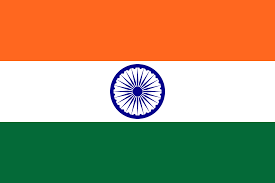India flag Colors Code hex, png svg
History of the Indian Flag
The history of the Indian flag is a testament to the country’s struggle for independence and its rich cultural heritage. The current flag, adopted on July 22, 1947, has evolved through various stages:
- 1906 – Calcutta Flag:
- The first unofficial flag of India, hoisted by freedom fighters in Calcutta (now Kolkata).
- It featured three horizontal stripes of green, yellow, and red.
- The green stripe had eight half-opened lotus flowers, symbolizing the country’s provinces.
- The yellow stripe bore the words “Vande Mataram” in Devanagari script.
- The red stripe had a crescent and a star on the left and a sun on the right.
- 1917 – Home Rule Movement Flag:
- Used during the Home Rule Movement led by Bal Gangadhar Tilak and Annie Besant.
- It had five red and four green horizontal stripes and seven stars in the shape of the constellation Saptarishi.
- A Union Jack was placed in the top left corner, symbolizing the British rule, and a white crescent and star were on the top right corner.
- 1921 – Gandhi’s Flag:
- Proposed by Mahatma Gandhi and designed by Pingali Venkayya.
- It had three horizontal stripes of white, green, and red.
- The white stripe symbolized minority communities, the green represented Muslims, and the red stood for Hindus.
- A spinning wheel (charkha) was placed at the center, symbolizing self-reliance and the Swadeshi movement.
- 1931 – Tricolor Flag:
- Adopted by the Indian National Congress.
- It had three horizontal stripes of saffron, white, and green.
- The charkha remained in the center of the white stripe.
- This flag was the precursor to the current national flag.
- 1947 – Present Flag:
- Adopted on July 22, 1947, as the official flag of independent India.
- Designed by Pingali Venkayya with three horizontal stripes of saffron, white, and green.
- The charkha was replaced by the Ashoka Chakra, a 24-spoke wheel in navy blue, at the center of the white stripe.
Colors and Their Meanings
- Saffron (Top Stripe):
- Symbolizes courage and sacrifice.
- Represents the strength and bravery of the country.
- White (Middle Stripe):
- Denotes peace and truth.
- Reflects the country’s commitment to truth and honesty.
- Green (Bottom Stripe):
- Stands for faith and chivalry.
- Represents fertility, growth, and auspiciousness of the land.
- Ashoka Chakra (24-Spoke Wheel):
- Located at the center of the white stripe.
- Represents the eternal wheel of law (Dharma Chakra).
- Symbolizes motion and progress, reminding citizens of the dynamism of a peaceful change.
The Indian flag, with its rich history and profound symbolism, continues to inspire and unite the nation.
Guess the Flags Quiz
Sharing is caring 🤗

National Symbols 👇
- 🏁 National Flags
- 🦁 National Animals
- 🐦 National Birds
- 🌻 National Flowers
- 🌴 National Trees
- 🥭 National Fruits
- 🍹 National Drinks
- 👴 National Founders
- ☘️ National Emblems
- 🍲 National Dishes
- 🏛️ National Monuments
- ✍️ National Poets
- 🕌 National Mausoleums
- 🎺 National Instruments
- 🦸 National Heroes
- 📆 National Days

